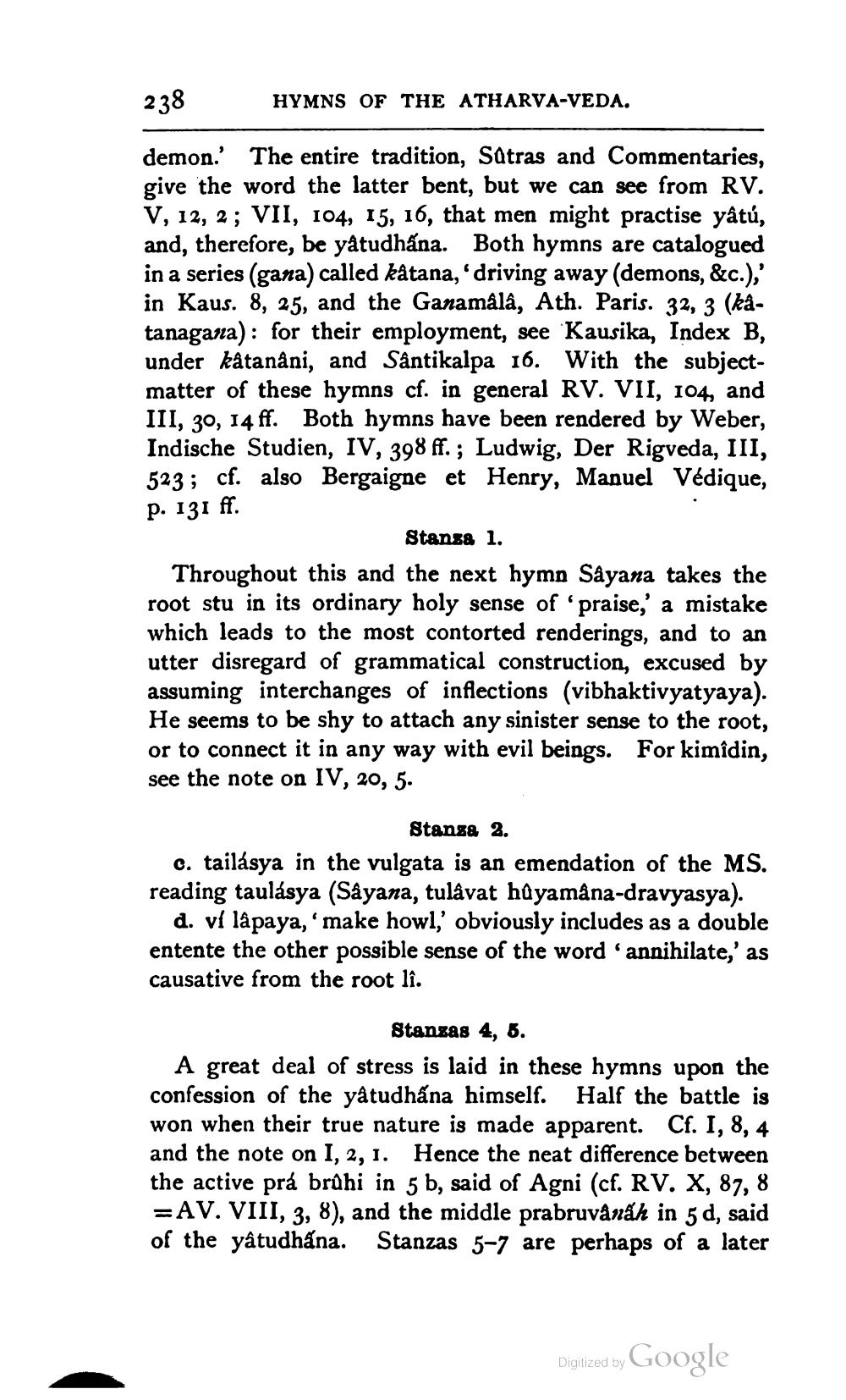________________
HYMNS OF THE ATHARVA-VEDA.
demon.' The entire tradition, Satras and Commentaries, give the word the latter bent, but we can see from RV. V, 12, 2; VII, 104, 15, 16, that men might practise yâtú, and, therefore, be yâtudhấna. Both hymns are catalogued in a series (gana) called kåtana, driving away (demons, &c.);' in Kaus. 8, 25, and the Ganamâlâ, Ath. Paris. 32, 3 (katanagana): for their employment, see Kausika, Index B, under kåtanâni, and Såntikalpa 16. With the subjectmatter of these hymns cf. in general RV. VII, 104, and III, 30, 14 ff. Both hymns have been rendered by Weber, Indische Studien, IV, 398 ff.; Ludwig, Der Rigveda, III, 523; cf. also Bergaigne et Henry, Manuel Védique, p. 131 ff.
Stansa 1. Throughout this and the next hymn Sảyana takes the root stu in its ordinary holy sense of 'praise,' a mistake which leads to the most contorted renderings, and to an utter disregard of grammatical construction, excused by assuming interchanges of inflections (vibhaktivyatyaya). He seems to be shy to attach any sinister sense to the root, or to connect it in any way with evil beings. For kimidin, see the note on IV, 20, 5.
Stanza 2. c. tailásya in the vulgata is an emendation of the MS. reading taulásya (Sảyana, tulâvat hūyamâna-dravyasya).
d. vi lå paya,'make howl,' obviously includes as a double entente the other possible sense of the word 'annihilate,' as causative from the root lî.
Stansas 4, 5. A great deal of stress is laid in these hymns upon the confession of the yâtudhấna himself. Half the battle is won when their true nature is made apparent. Cf. I, 8, 4 and the note on I, 2, 1. Hence the neat difference between the active prá brûhi in 5 b, said of Agni (cf. RV. X, 87, 8
=AV. VIII, 3, 8), and the middle prabruvânáh in 5 d, said of the yâtudhana. Stanzas 5-7 are perhaps of a later
Digized by Google




